LIGHT AND FLUFFY SPONGE CAKE SOAKED IN VANILLA FLAVORED THREE MILKS MIXTURE.
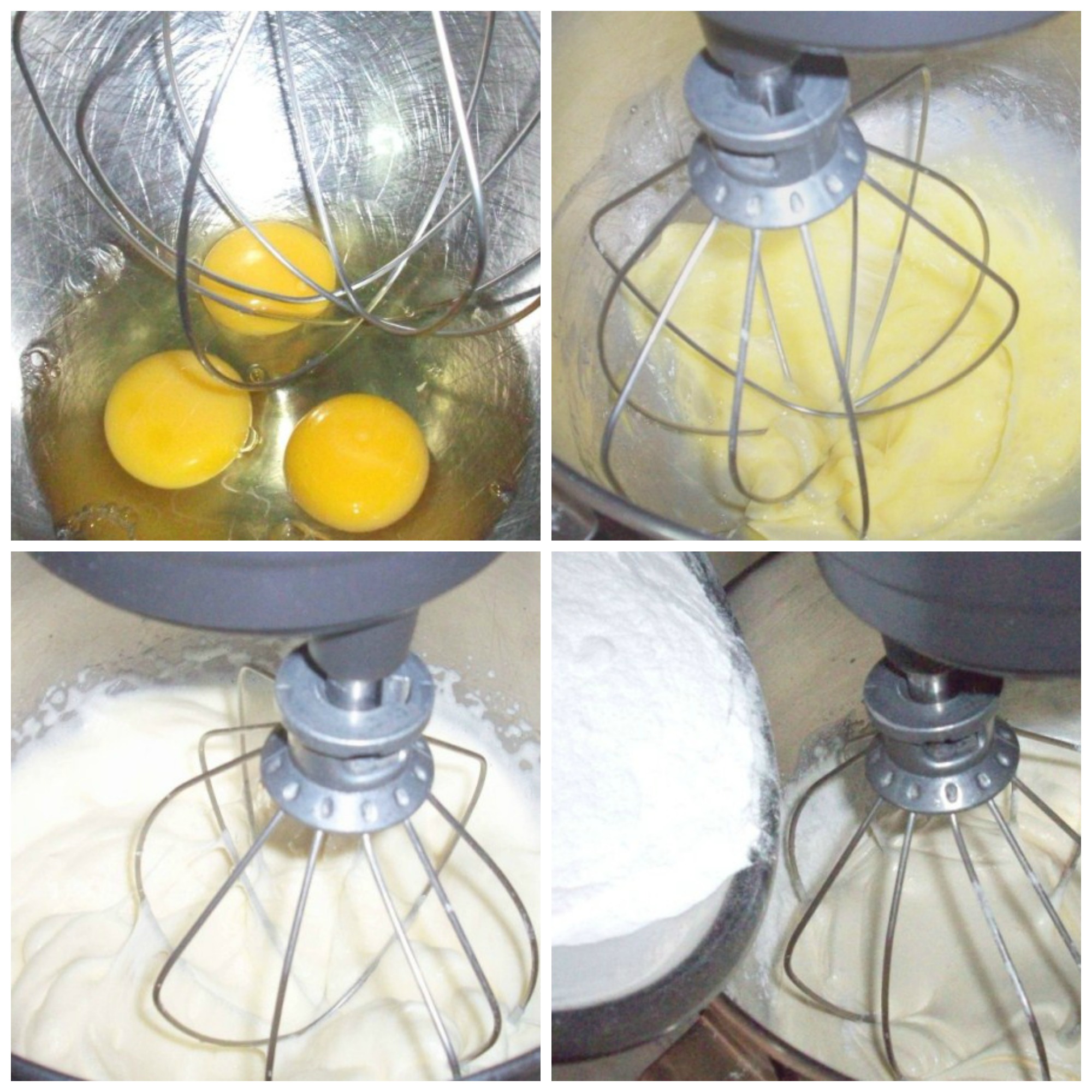
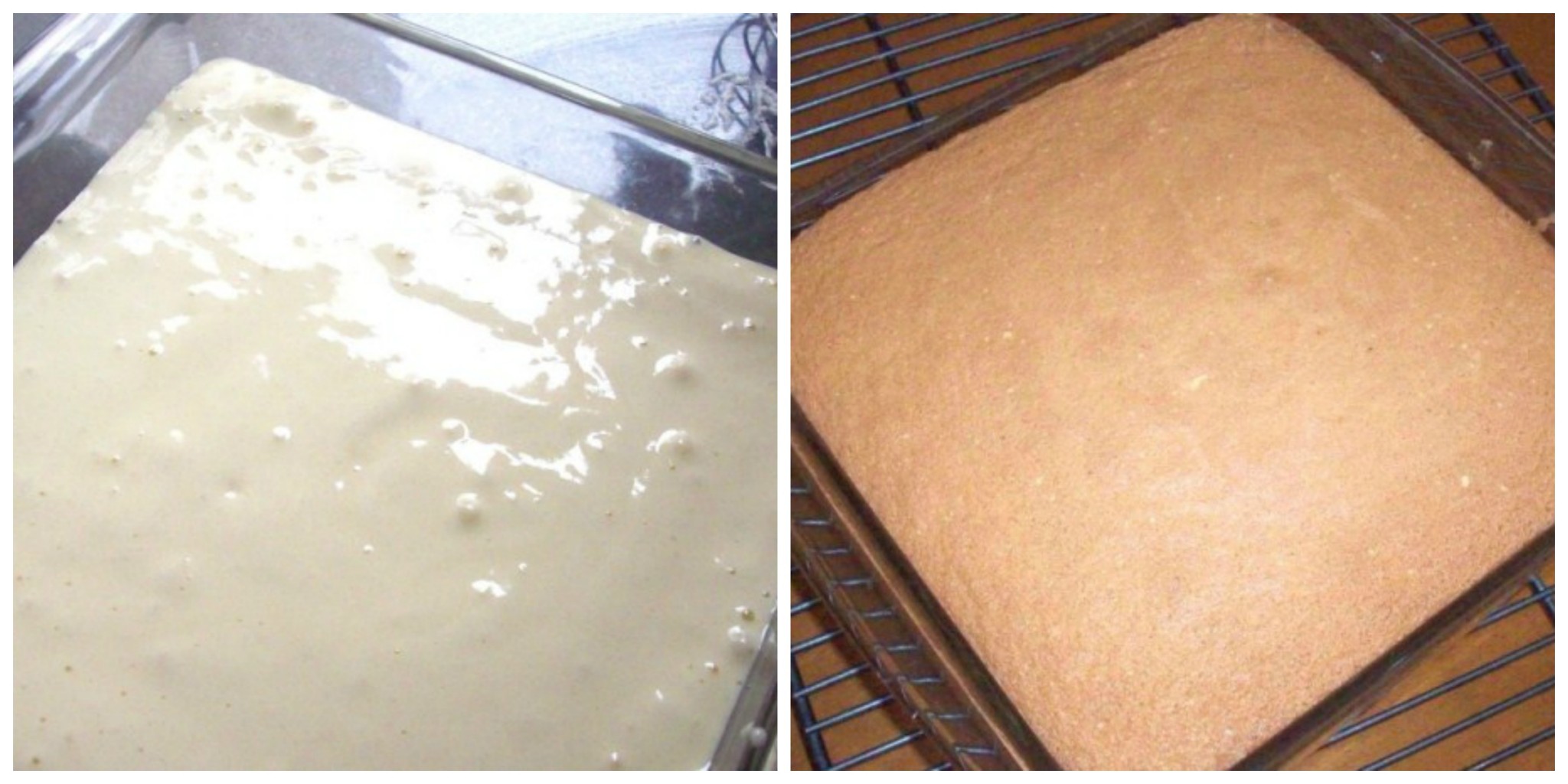
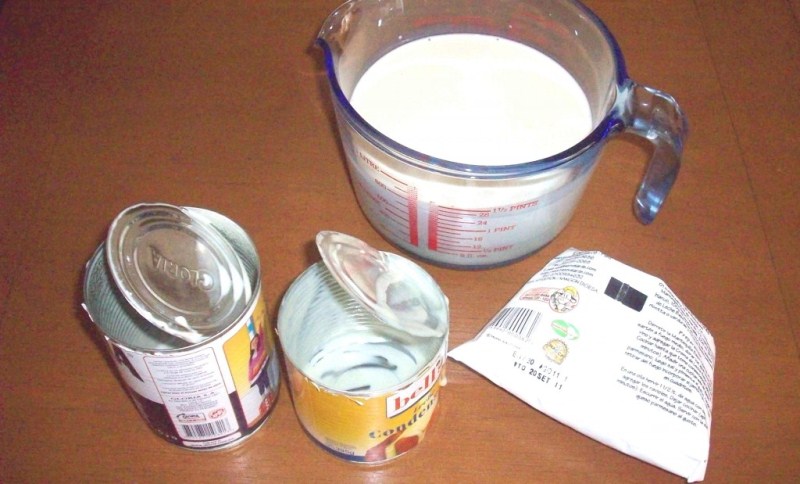
- 3 eggs (at room temperature)
- 1 cup all purpose flour
- 1½ teaspoon baking powder
- ½ cup sugar
- ¼ cup milk (at room temperature)
- 1 can condensed milk
- 1 can evaporated milk
- 1 cup heavy cream
- 1 teaspoon vanilla essence
- *Turn the oven on to 350 F.
- *Sift the flour together with the baking powder.
- * Beat eggs at the highest speed for about 5 minutes. They have to grow to about 3 times the volume (or more) from when you started beating them. Make sure your mixer is completely dry before you pour the eggs in it, otherwise they won´t grow. Same advice goes when preparing the meringue.
- * Add the sugar little by little while still beating the grown eggs.
- *Turn the beater down to slow speed and add a third of the flour, then a third of the milk, then a third of the flour, and so on, till all the ingredients blend completely.
- *Transfer to an oven proof container (I use Pyrex), and bake for 30 minutes.
- *In the meantime, mix the 3 milks with the vanilla and set aside.
- *To make sure the cake is ready, pinch with a knife and it should come out clean, otherwise leave it in the oven for a few extra minutes till the knife comes out clean.
- *Pinch the cake everywhere with a stick or with a fork. Do it as soon as it comes out of the oven so it´s still hot. Pour the cold milks over the cake immediately, making sure you do this evenly and cover every part of the cake, including the sides and corners.
- *Let it cool, and then serve, or put in the fridge to serve cold (I prefer the latter). It keeps well in the fridge for several days, even better if covered with a lid or plastic film.
- If you want to decorate it with meringue, here are the instructions:
- *Beat 2 egg whites at full speed till they grow and start getting the consistency of soft meringue. (Again, make sure your mixer is completely dry and that there´s absolutely no trace of yolk, otherwise the whites won´t grow). Pour ½ cup confectioner´s sugar (or to taste), tablespoon by tablespoon, while still beating. You may want to do this on a low speed so it doesn´t bring up a sugar cloud in all your kitchen, and when it´s properly mixed with the egg whites start beating fast again. Stop beating when the meringue has the consistency you want and looks shiny and silky. If you keep beating past this point the meringue gets ruined, so better to stop early than late.
TRES LECHES (Makes an 8 x 8 inch tray. About 8-10 portions).
3 eggs (at room temperature)
1 cup all purpose flour
1 1/2 teaspoon baking powder
1/2 cup sugar
1/4 cup milk (at room temperature)
1 can condensed milk
1 can evaporated milk
1 cup heavy cream
1 teaspoon vanilla essence
Preparation:
*Turn the oven on to 350 F.
*Sift the flour together with the baking powder.
* Beat eggs at the highest speed for about 5 minutes. They have to grow to about 3 times the volume (or more) from when you started beating them. Make sure your mixer is completely dry before you pour the eggs in it, otherwise they won´t grow. Same advice goes when preparing the meringue.
* Add the sugar little by little while still beating the grown eggs.
*Turn the beater down to slow speed and add a third of the flour, then a third of the milk, then a third of the flour, and so on, till all the ingredients blend completely.
*Transfer to an oven proof container (I use Pyrex), and bake for 30 minutes.
*In the meantime, mix the 3 milks with the vanilla and set aside.
*To make sure the cake is ready, pinch with a knife and it should come out clean, otherwise leave it in the oven for a few extra minutes till the knife comes out clean.
*Pinch the cake everywhere with a stick or with a fork. Do it as soon as it comes out of the oven so it´s still hot. Pour the cold milks over the cake immediately, making sure you do this evenly and cover every part of the cake, including the sides and corners.
*Let it cool, and then serve, or put in the fridge to serve cold (I prefer the latter). It keeps well in the fridge for several days, even better if covered with a lid or plastic film.
If you want to decorate it with meringue, here are the instructions:
*Beat 2 egg whites at full speed till they grow and start getting the consistency of soft meringue. (Again, make sure your mixer is completely dry and that there´s absolutely no trace of yolk, otherwise the whites won´t grow). Pour 1/2 cup confectioner´s sugar (or to taste), tablespoon by tablespoon, while still beating. You may want to do this on a low speed so it doesn´t bring up a sugar cloud in all your kitchen, and when it´s properly mixed with the egg whites start beating fast again. Stop beating when the meringue has the consistency you want and looks shiny and silky. If you keep beating past this point the meringue gets ruined, so better to stop early than late.





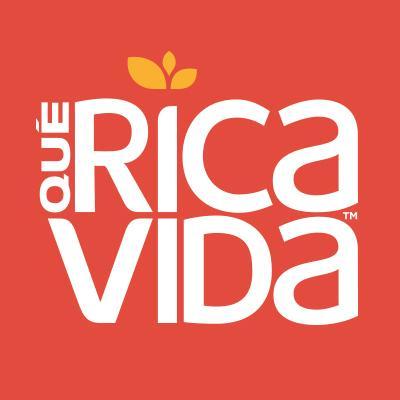



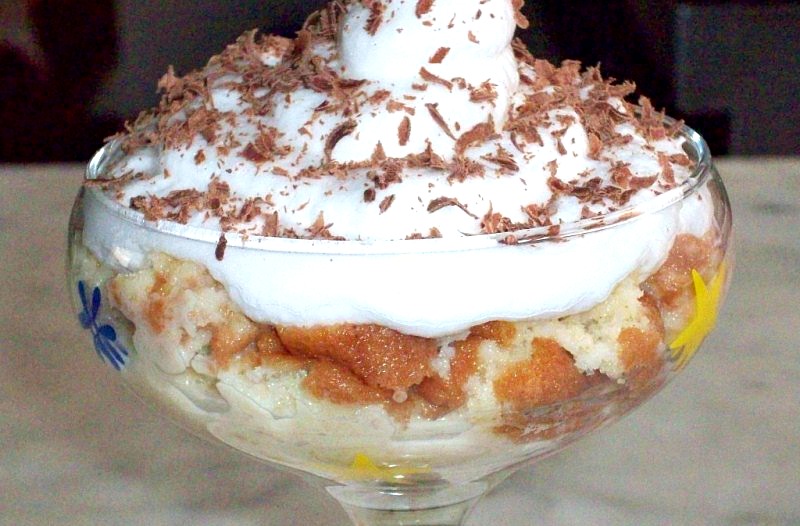

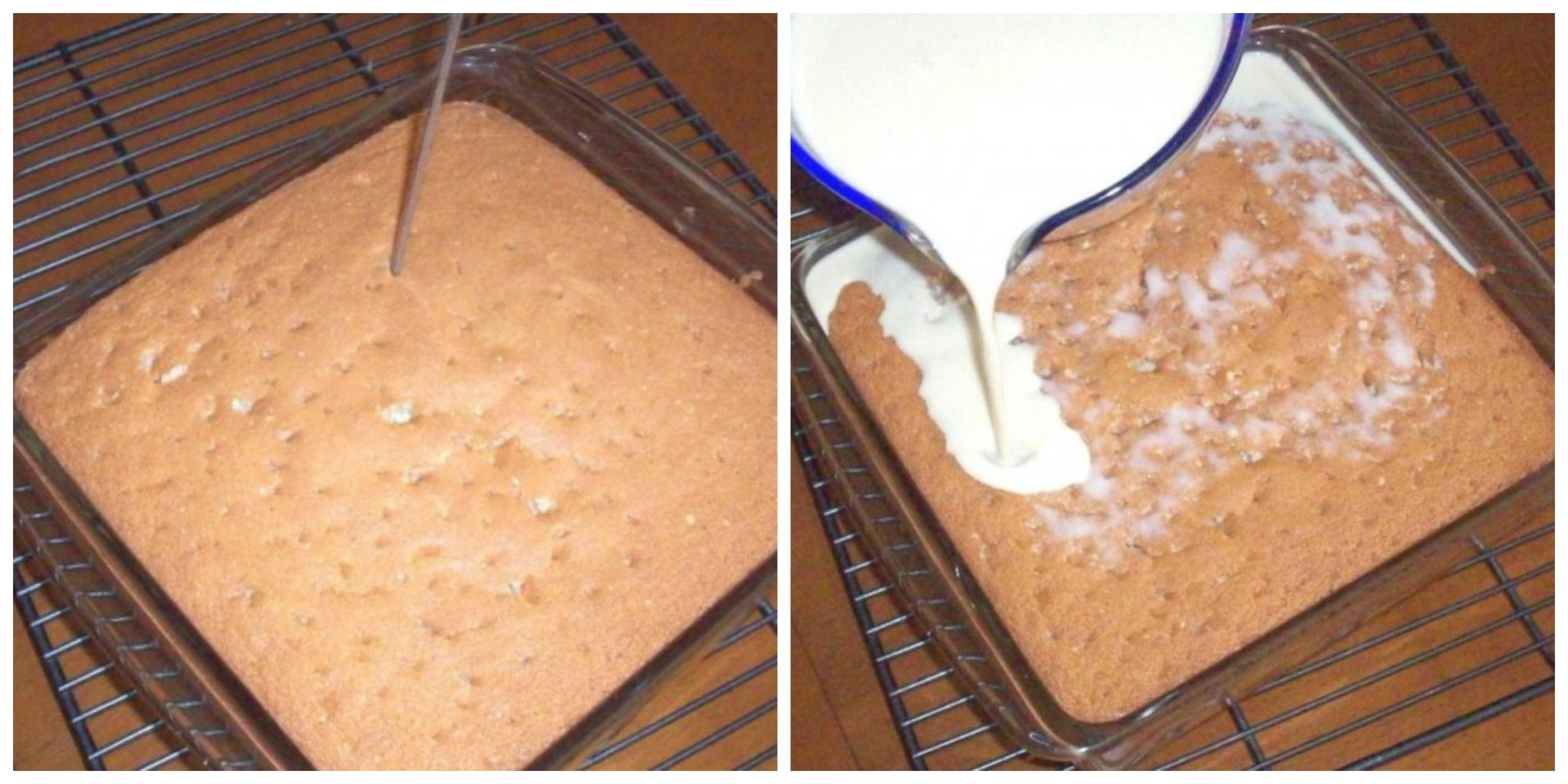
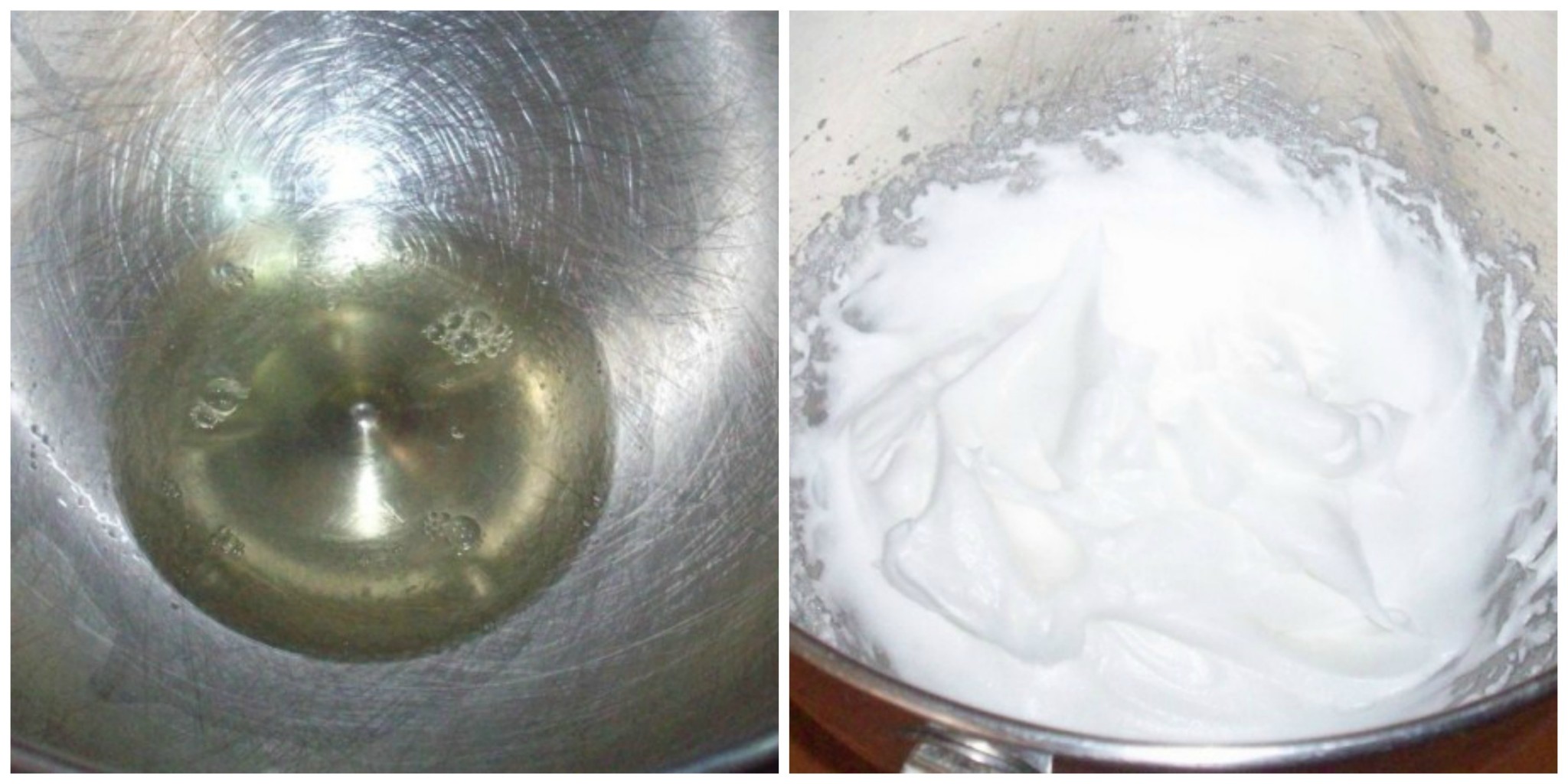
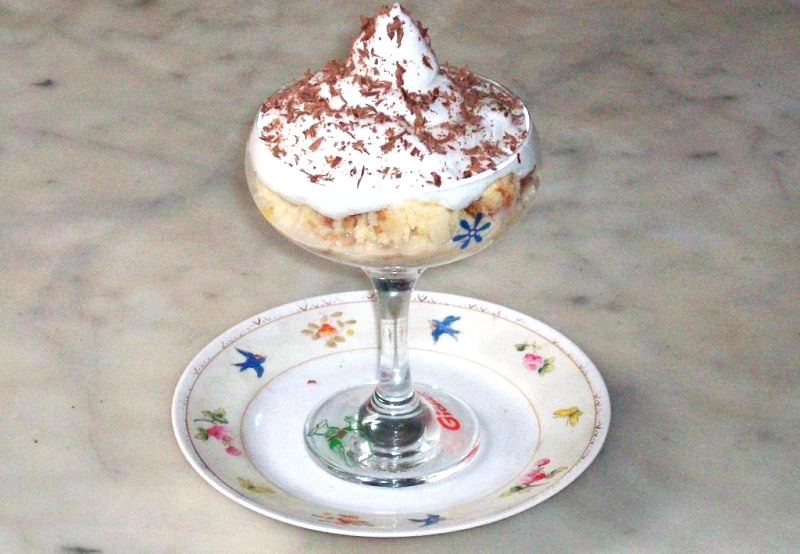
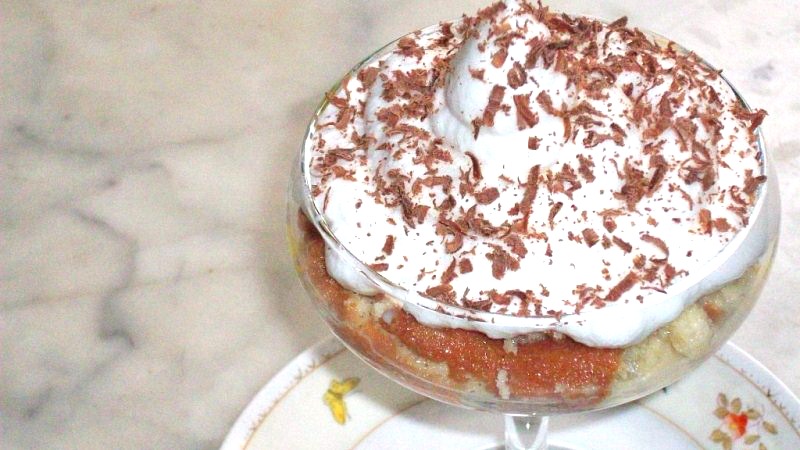

Oh my GOSH! I think I just stepped into Dessert heaven! I love this recipe! I’ll be bookmarking it and returning. Def. a recipe I want to do during my next family gathering. Mil gracias!!!
Mmmm looks positively delish! I’m trying to learn to make Latino recipes (or learn how to COOK in general haha) and this looks like something I’m definitely gonna have to try! Gracias!
De nada chicas! Its actually easier than it looks, you just need to go ahead and DO IT! 🙂 Good luck, y provecho!
Hi!
Thank you for sharing this awesome cake. I tried to make it tonight and something weird happened. I started to poke holes with a fork and cake pieces/chunks were coming right out with the fork! The sides were good. Any idea why this happened?? lol
Thanks again!
-Carol
It was probably not cooked enough, Carolyn. When this happens, you should bake it for a few more minutes, and poke again. If it’s still not ready, bake some more. Every oven is different, so in many cases you need to adjust the baking time a little.
Ola!, nice article! I will keep reading your homepage 😉
WOW! That looks so delicious! I wish I had some right now! 🙂
Just wanted to tell you that I’m loving your blog so much! Soy peruana y se me hace agua la boca cada vez que vengo de visita!
Thank you sooooo much!! Y sigan adelante!!
Gracias Roxana! Keep tuned for more 😉
Wow… my mouth watered! Que rico se mira!
My favorite cake! I love adding a chorrito de ron to the mix 😉
Ron!!! thats a first! Will sure try it 😀
I had NO idea it was a classic in Peru. I know it’s native to Nicaragua and that others have variations, but no clue about Peru. Love it! Nice garnish!
Yup! U can find it everywhere in Peru. I wonder about other Latin american countries though…
A noteworthy difference if you’re eating tres leches in Puerto Rico is that it contains the addition of cream of coconut.
And that is a variation I love!!
This looks so great…. I always insist on a tres leches cake for my birthday every year.
Mmmmm!!! Tres Leches is one of my favorites!!! And I love how you topped yours with meringue instead of whipped cream. I am definitely going to try that next time I make tres leches. 🙂
As I’m reading this, I’m snacking on carrot sticks but I’d so much rather have this right now!
good girl lisa! 😉 u obviously have a stronger power of will than us!
Madre, mia!
I love Tres Leches…and my Miami favorite: Cuatro Leches!
Thanks for not making this seem intimidating…and please take me to Peru with you!
Carrie, you have to share with us what a cuatro leches is!!!!! Do you have a recipe for it? I once had a 7 Leches in a very upscale, minimalist restaurant in Lima. It was….ummm…. strange.
Cuatro leches is something we eat in the U.S., especially here in Florida. It’s tres leches with dulce de leche icing.
Oh and I make a siete leches and it’s yummy. 😛
This looks delicious and SO easy! I love your step-by-step photos, and the way you phrase the instructions, it’s like you’re having a conversation with a girlfriend. Thanks for sharing!
Thanks Mariana! That´s really nice to hear 🙂
This sounds amazing.
Tres leches is my favorite dessert, but I am always so concern about so many calories 🙁 but it´s worthy to get some extra calories when you eat such a delicious cake!
Ahhhh, tres leches!!! This is one of my comfort desserts… Don´t worry about the calories and do like I do: a medium portion once in a while, and enjoy it!!
I have a dinner party and I am thinking of making this, but with the cup presentation that you show, but in a larger serving plate…
Do you suggest making the cake a day before, then break it in chunks and put them on the larger serving plate, and pouring the milks and merengue on top the same day of the dinner party?
I suggest you make it as usual and transfer it to the serving plate you want to use the night of the dinner party, OR, transfer the cake right out of the oven and pour the milks while still warm, then when it has cooled down put the meringue on top, and into the fridge. The meringue will prevent the cake from getting dry on top. In this case I would suggest using confectioners sugar for the meringue, cause when you do it with normal sugar the next day the meringue becomes very sandy, you can feel the grains of sugar. If you don’t want to use meringue, put a lid or film to cover the tres leches so it doesnt dry a bit on top. I hope this helps!
This looks fantastic! I’ve been searching for a really good tres leche cake. I can’t wait to try this one!
Katja, you won’t regret it. This recipe has been in our family for decades and it’s THE BEST tres leches we’ve tried.
This looks delicious, and your descriptions of a fav best-ever family favorite won me over–my question: if I don’t make the meringue, I guess its sort of plain? But still good? I’m leaning toward leaving out the meringue step.
Sometimes I don´t cover the cake with meringue, and I swear there is nothing plain in this dessert! Your family will love it, with or without meringue. Let us know how did you like it?
thank you for the answer. I plan on making this tomorrow for my sister in law’s birthday (who is from Peru). I’m nervous. 🙂
Awww! Don’t be 🙂 I’m sure your sister in law will love it. The most important tips are:
make sure the mixer is very clean and dry.
make sure the eggs grow a lot (you should beat at high speed for about 5-10 minutes)
use room temperature milk in the cake mixture (not cold)
use room temperature eggs
pinch everywhere AS SOON as it comes out of the oven and add the milks, making sure you cover ALL the corners
and finally, we like it better when it’s cold, so I would let it sit overnight for optimum results! 🙂 Let us know how you did!
If I want to make a bigger cake, do I muy double everything? This is for 8-10 people and I would like to make one for a big crowd… Any suggestions?
Lily, I would recommend you double the recipe and bake it in 2 baking pans. You may have to switch their position in the oven after 15 minutes of baking, because ovens tend to bake unevenly, and you don’t want one cake to burn and the other to be raw.
Hi Question –
I’m planning on making this for my good friend who’s from Peru – however, in the directions it says *Turn the beater down to slow speed and add a third of the flour, then a third of the milk, then a third of the flour, and so on, till all the ingredients blend completely. ” is the milk being added here the 1/4 cup?? what 3 milks are mixed together as you note in the next step?? help!
The 1/4 cup milk is added alternating with the flour. The three milks added after baking the cake are: evaporated milk, condensed milk and cream. Hope you like it.
How much does a “can” mean for the condensed and evaporated milks? Thanks!
12-ounce evaporated milk. 14-ounce condensed milk. Let us know when you try this cake Kinsey.